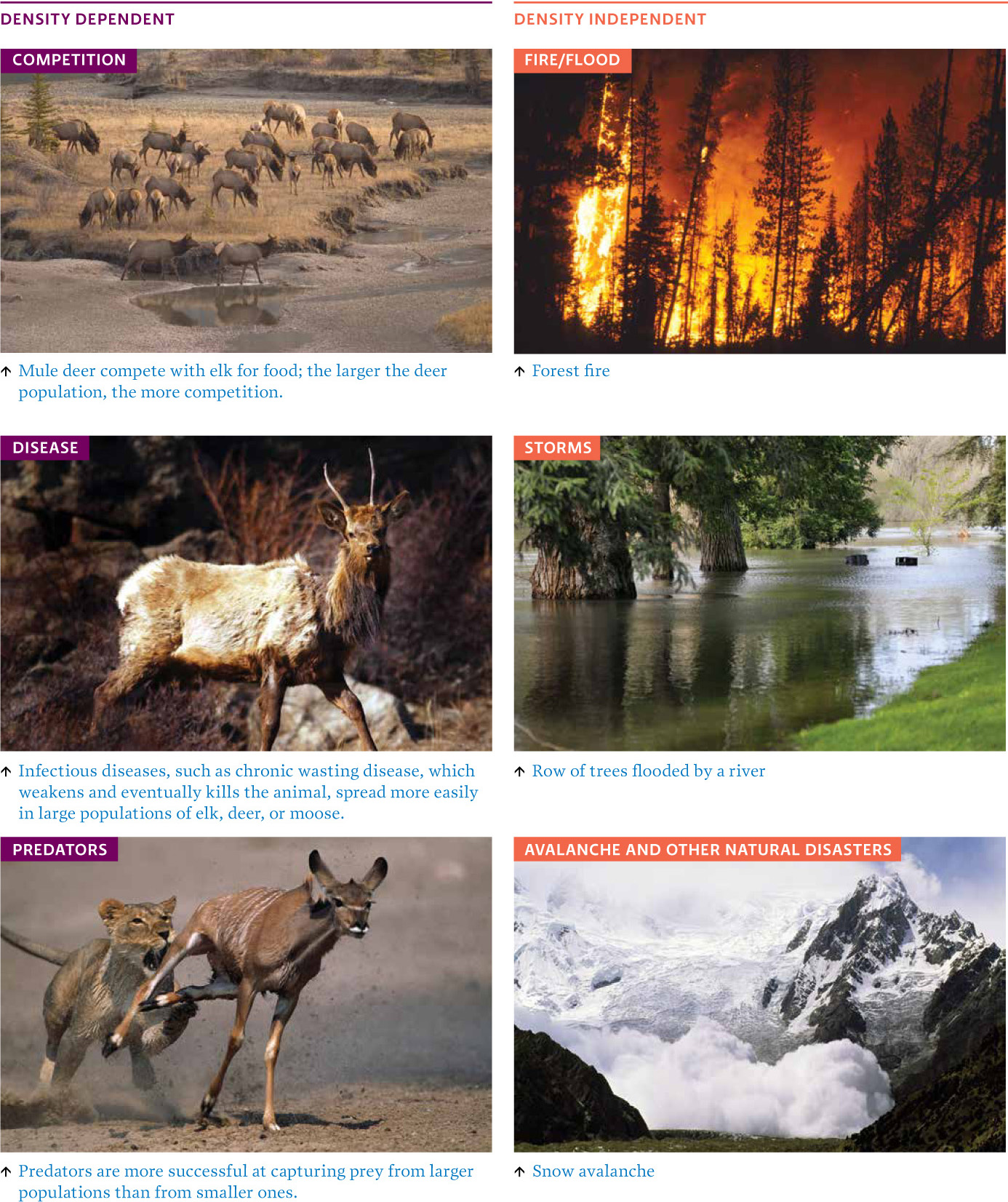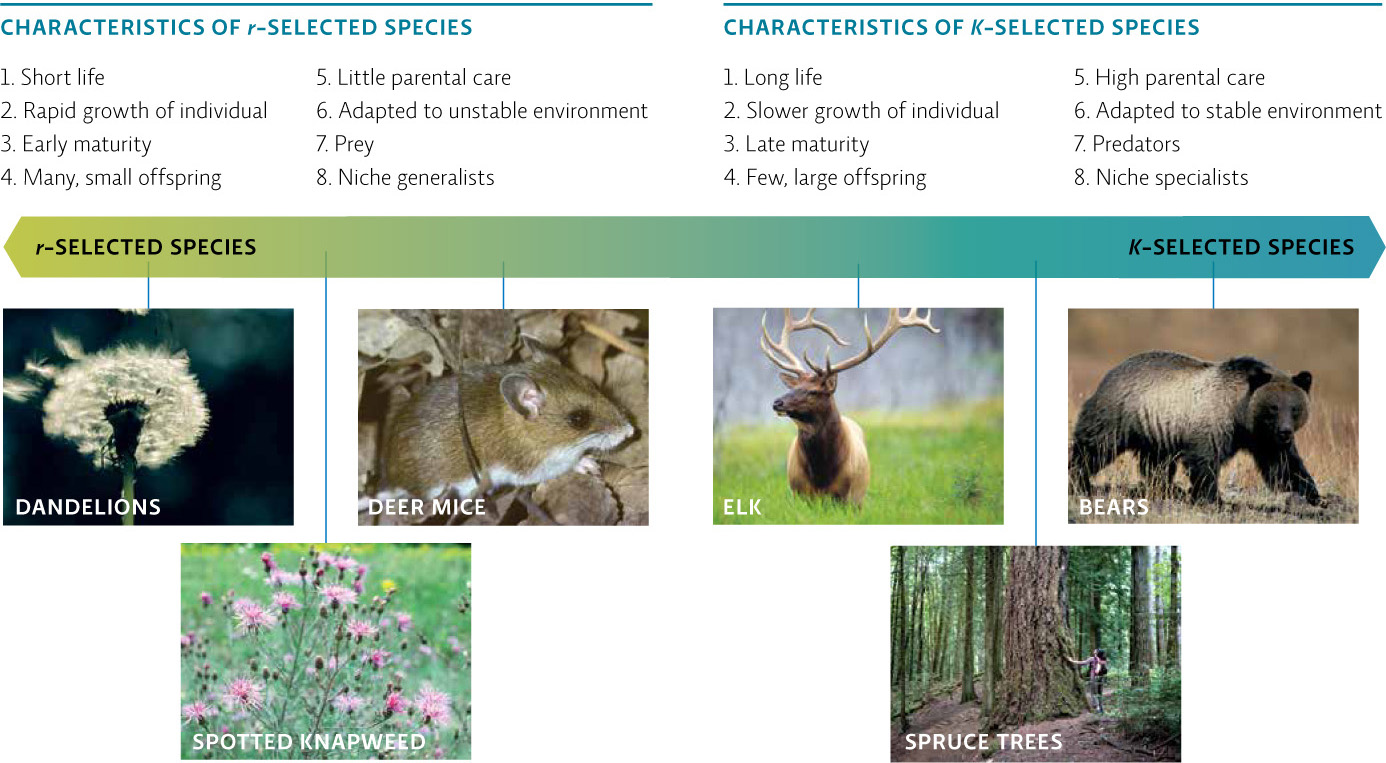7.4 A variety of factors affect population growth.
Populations will grow as long as growth factors are available, but as the population gets larger, resources start to decline. The limiting factor, that resource that is most scarce, tends to determine carrying capacity. Resistance factors, which include predators, competitors, and disease, also control population size and growth. The effects that predators have on populations can vary widely, in part because predators, along with disease and competition, are density-dependent factors—their effects all increase as population size goes up. On the other hand, some factors, such as droughts, storms, and floods, affect a population no matter how large or small it is. These density-independent factors don’t routinely regulate population size, but they can certainly decrease it. [infographic 7.4]

120
121
A species’ biology also affects its growth potential. For instance, ecologists recognize a continuum of reproductive strategies among species. Those that reproduce quickly, with high biotic potential, are known as r-selected species—so named because of their high rate of population increase (r). Species that are r-selected, such as deer mice and spotted knapweed, are well adapted to exploit unpredictable environments, and are able to increase quickly if resources suddenly become available.
On the other hand, K-selected species, which in Canada include bears, wolves, and slow-growing trees like spruce, are found at the other end of the continuum and have much lower reproductive rates. Because they reproduce slowly, their population growth rates are responsive to environmental conditions; they decrease or increase slowly if resources decrease or increase in availability. This responsiveness tends to keep population sizes close to carrying capacity (K). [infographic 7.5]

K- and r-selected species often experience different types of population change. For instance, population sizes tend to be stable for K-species in undisturbed, mature areas. On the other hand, r-species sometimes have sudden, rapid population growth, characterized by occasional surges to high peaks, which may overshoot carrying capacity, followed by sudden crashes, especially in response to seasonal availability of food or temperature changes. Their high rate of reproduction does not allow the population the time to adjust and produce fewer offspring as resources become scarce. When this occurs, the population that has exceeded carrying capacity will drop below carrying capacity and then increase again. Some populations will eventually level off close to carrying capacity while others continue to overshoot and crash.
Predator and prey also respond to each other; predator populations increase as their prey population increases. But an increase in predators eventually reduces the prey population. Fewer prey means less food, and eventually reduces the number of predators, allowing the prey species to recover. In some cases, the fluctuations in population size are large enough to result in boom-and-bust cycles, with the predator population peaks lagging behind those of its prey or food source. A classic example is that of the snowshoe hare and Canada lynx. Long-term data, based on the fur trade and going as far back as the 1800s, show that snowshoe hare populations undergo cyclic oscillations. According to recent studies by University of British Columbia researcher Charles Krebs, these mirror the size of predator populations, such as lynx and great-horned owls. The lowest point in hare population size occurred in 2006 after the rise of an additional hare predator, the marten, whose population has increased significantly since 2000. [infographic 7.6]

122